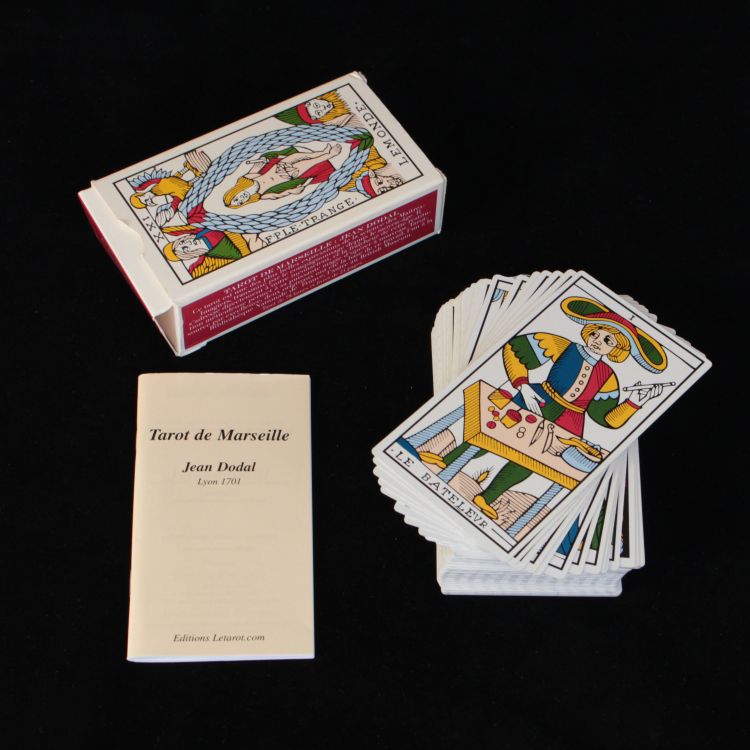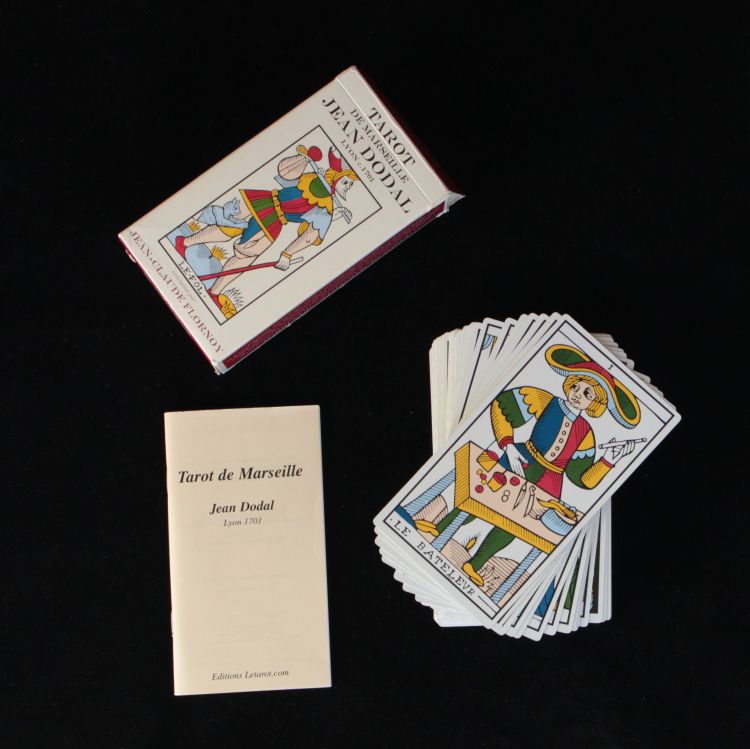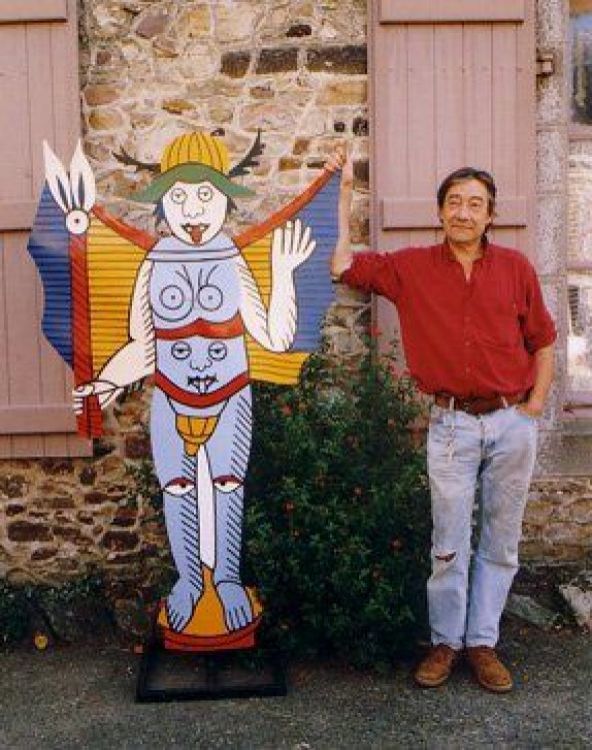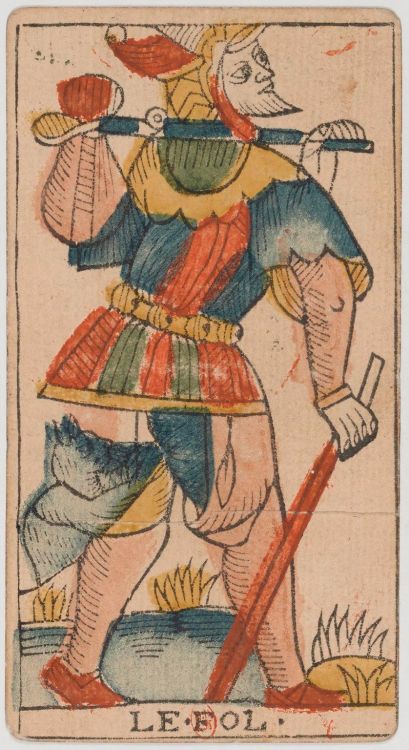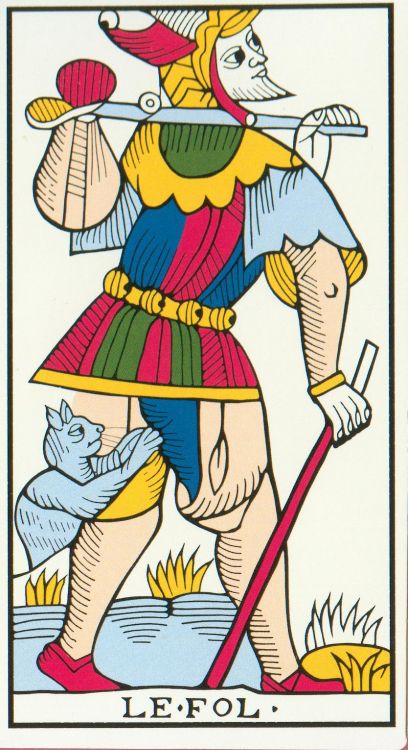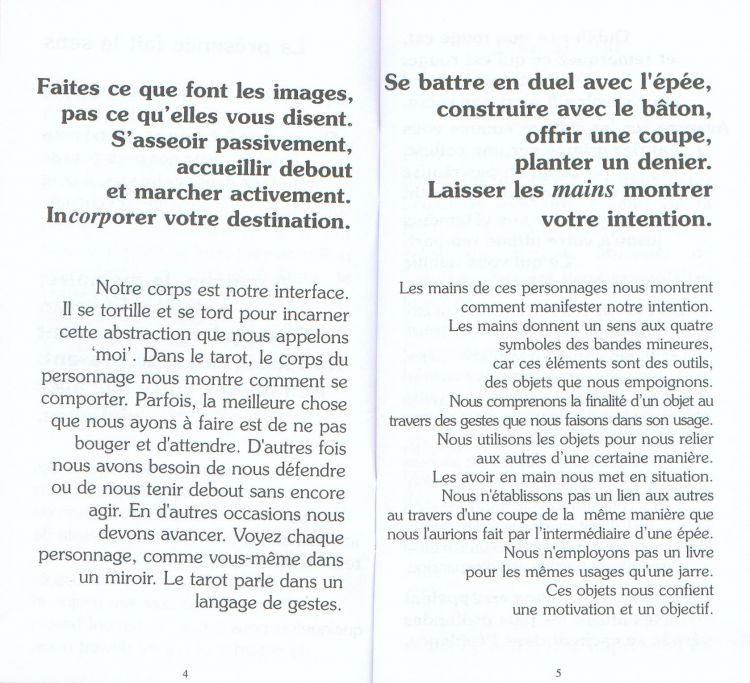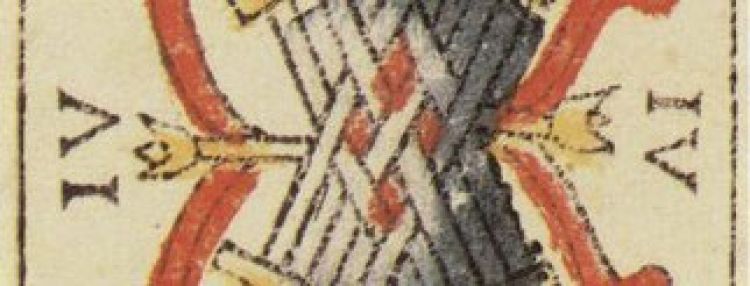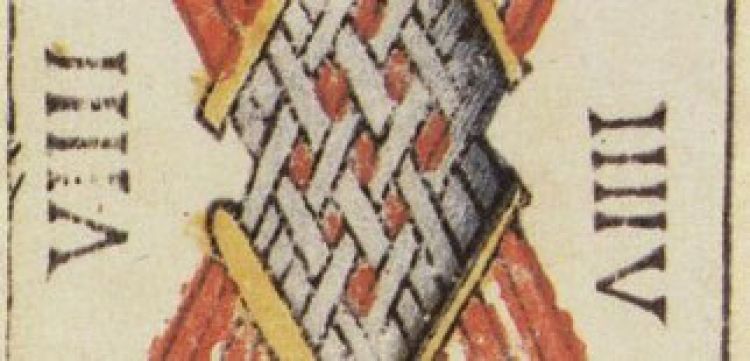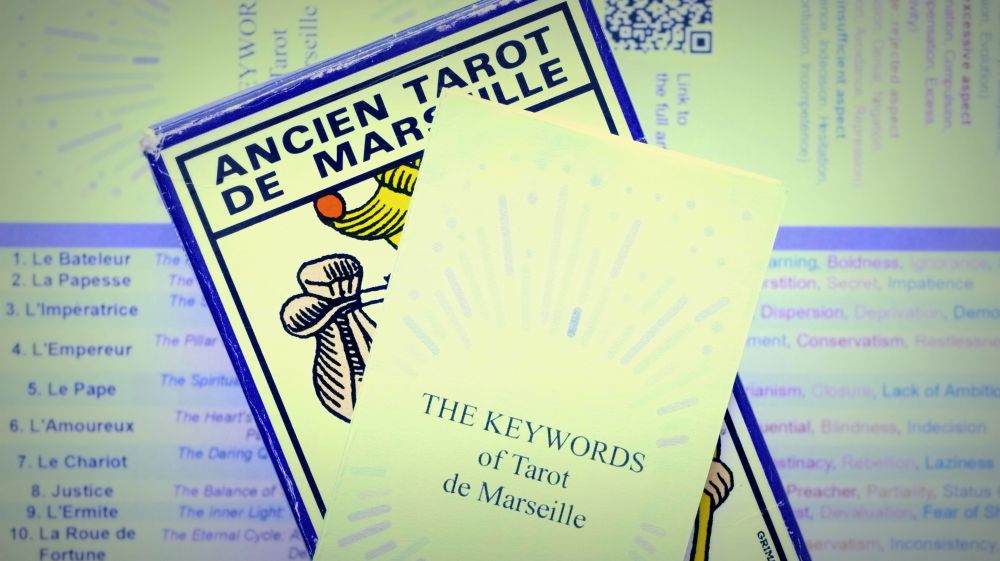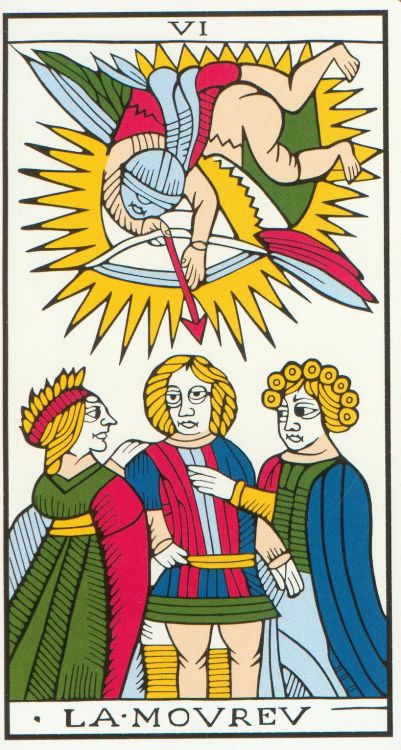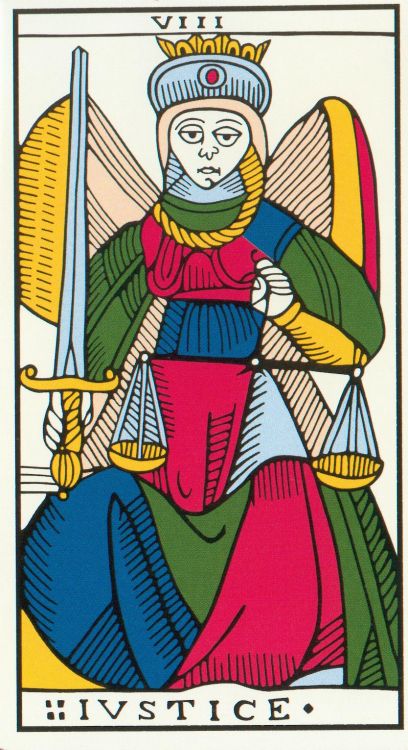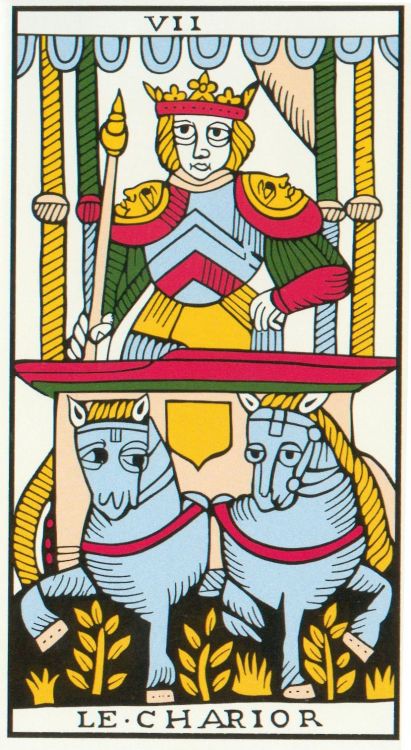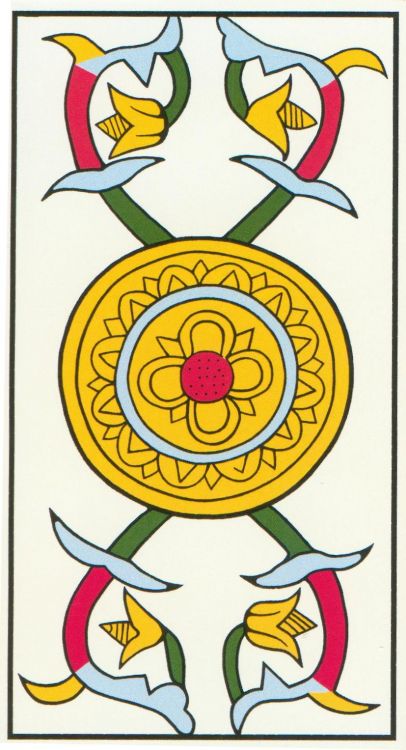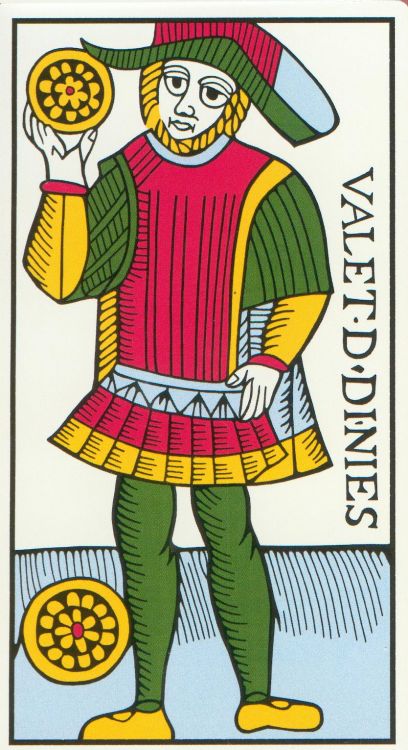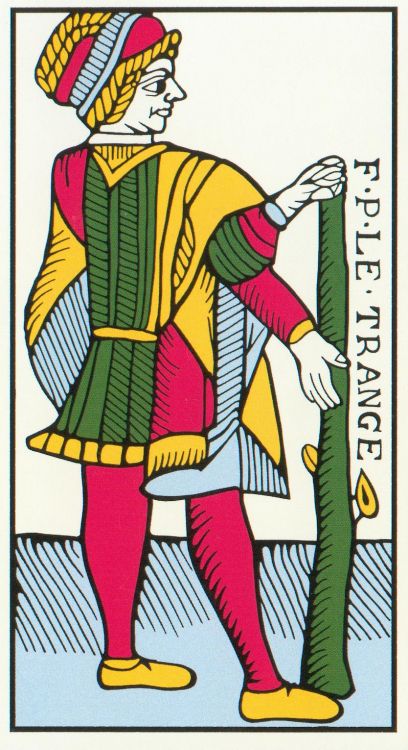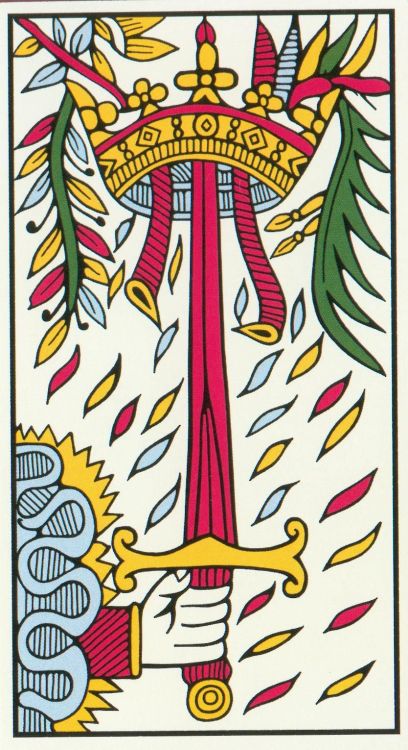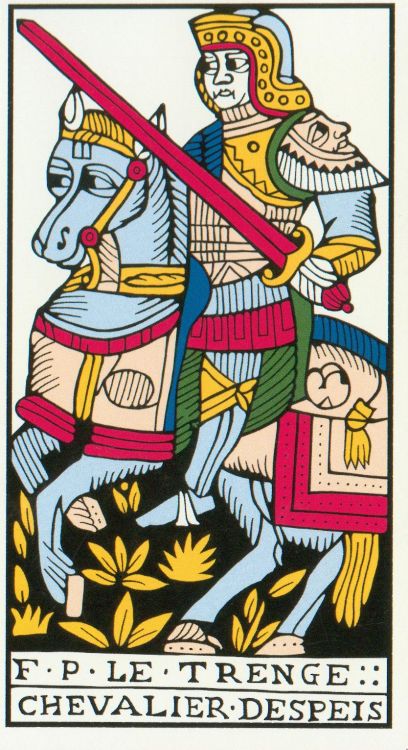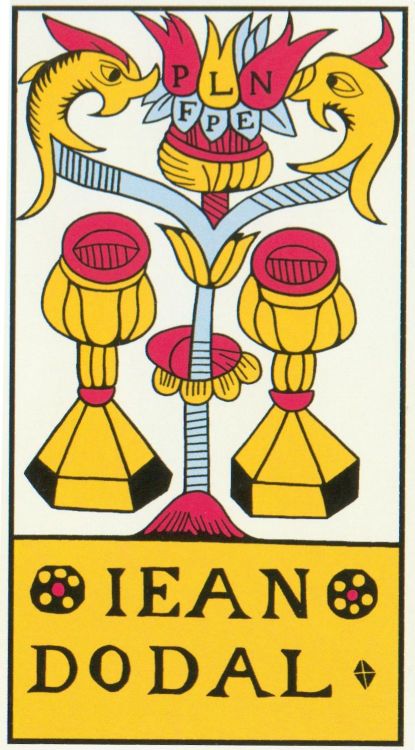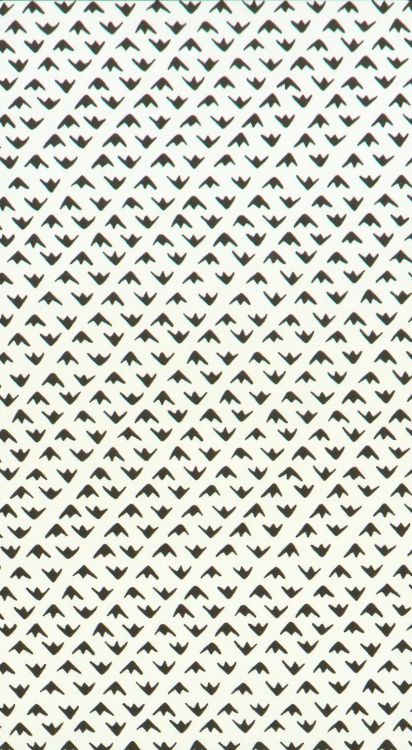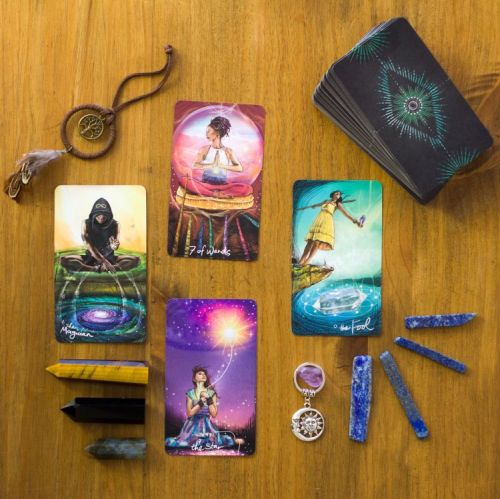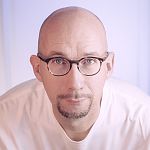The Dodal tarot is in many ways a unique case in the history of the Tarot de Marseille. It is the worthy representative of a tradition beginning with the master cardmaker Nicolas Rolichon and ending with the master cardmaker Jean Pierre Payen (as far as we know). Dodal and its engraver Jacques Mermé brought their innovations which were either integrated or rejected in the Marseilles standard.
I particularly like this tarot (and the Noblet one which I make the review here) and I prefer reading with it and the Noblet rather than with a modern tarot like the Camoin-Jodorowsky (my review ici) or the Fournier (my review ici) . I use this deck because its images have a graphic style resembling medieval stained glass windows and make it a "cathedral tarot", where wisdom and understanding of the soul's path lies.
The reader accustomed to the tarot cards of Marseilles will find in this game, a renewal of the archetypes, a deeper questioning of the meanings of the Major Arcana. This game is an essential reference for the study of the Tarot de Marseille.
The beginner practitioner (in the Marseille tradition) will undoubtedly have to get used to the very medieval imagery of the game, especially if he comes from the Rider-Waite-Smith school. But he will have everything to gain by working with the Dodal rather than preferring more recent Marseille games, with more modern colors and drawings. The effort will be rewarded by a more factual and less esoteric understanding of the Tarot's initiatory message.
To learn more and deepen your knowledge of tarot, check out my article on the meanings of the 78 tarot cards or on the 22 Trumps (major arcana).
